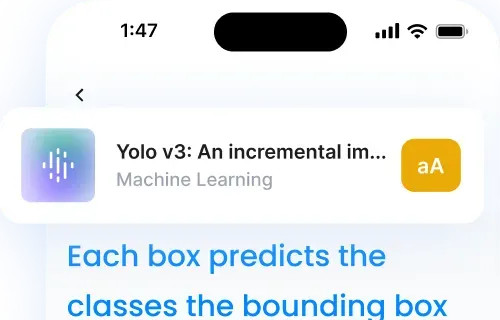Picture this: it’s the night before your paper is due, and you’re staring at a blank document, wondering how to write a 12-page paper in such a short amount of time.
The cursor blinks mockingly at you as the panic starts to set in.
We’ve all been there – procrastination, unexpected events, or simply underestimating the time needed for such a lengthy assignment.
The good news is that it’s still possible to write a compelling informative or scientific paper, even when you’re in a time crunch.
In this blog post, we’ll share seven proven tips to help you tackle that daunting task and submit your paper on time, without compromising on quality.
So, take a deep breath, grab your favorite caffeinated beverage, and let’s dive in!
7 Practical Tips for Writing a Paper for Procrastinators
Tip 1: Break Down the 12-Page Paper into Manageable Sections
When writing a 12-page research paper, break the task into smaller sections. This makes the process less overwhelming and helps you maintain focus.
Create an outline with clear sections and subsections to serve as a roadmap for your paper.
Arrange the papers at key points in a logical flow and include relevant subsections for specific details.
Allocate a specific number of pages for each section to maintain a balanced structure throughout your entire paper.
For example, dedicate 2-3 pages for the introduction, 7-8 pages for the body paragraphs, and 1-2 pages for the conclusion.
Set mini-deadlines for each section to stay on track. Break it down into smaller tasks and assign realistic deadlines. Give yourself 2 hours for the introductory paragraph, 5 hours for the first half of one night the body paragraphs, and so on.
Breaking your paper into manageable sections is crucial when tackling a lengthy assignment under time constraints.
By creating an outline, allocating pages strategically, and setting mini-deadlines, you’ll write a well-structured 12-page research paper, even when time is limited.
Tip 2: Gather Your Resources and Take Effective Notes
Before starting the writing process, gather relevant resources and take effective notes to support your thesis statement.
Use online academic databases and library resources to quickly identify key sources.
Utilize search functions to find materials that relate directly to your research paper topic.
Skim through sources to determine relevance and usefulness.
Focus on abstracts, introductions, conclusions, and section headings. Take concise notes on key ideas, important points, and examples that support your main argument.

Organize notes to align with your outline based your paper outline, creating sections for each main point. Categorize notes accordingly for easy reference while writing.
Record citation information for each source, such as author, title, publication date, and page numbers, to save time when creating your works cited page.
Gathering resources and taking effective notes provides a solid foundation for writing your 12-page paper efficiently under time constraints.
Tip 3: Write a Strong Thesis Statement
A thesis statement is the most important part of a well-written research paper. It provides clear direction throughout the body paragraph the research paper.
To create a thesis, ensure it is clear, specific, and arguable. A clear thesis leaves no doubt about your main argument, while a specific thesis narrows your focus.
An arguable thesis presents a debatable claim supported by research evidence.
Importance of a Thesis Statement
When writing your thesis, directly address the paper prompt or question. Read the assignment guidelines carefully and respond concisely with your own words and main points.
Use your thesis to guide your writing process and maintain focus. Every paragraph and article should relate to and support your thesis.
If you stray, reevaluate your writing to align with your central claim.
Remember, your thesis can be revised as you gather information and develop concepts.
Modify your thesis as your research paper evolves, but keep it clear, specific, and arguable.
Tip 4: Dive into Writing Without Perfecting Every Sentence
When writing a 12-page research paper under time constraints, focus on getting your theses down without pursuing perfect phrasing.
Start writing your first draft without worrying about structure or grammar.
Writing your First Draft
Follow your outline and let your statements flow. Your outline guides you, ensuring you cover all the main points. Allow your writing to be rough in this initial stage.
Resist to edit every sentence to perfection as you write. This slows progress and causes frustration. The first draft is about getting your thoughts out, not creating a polished final draft.
You’ll refine your writing during the edit process. Once you’ve finished writing your draft, prioritize sentence structure, word choice, and clarity. Editing is the time to fine-tune your work.
By writing without perfecting every last sentence first, you’ll make significant progress on your 12-page paper. Maintain momentum and avoid getting stuck on minor details. The goal is to get your ideas down and create a solid foundation for your final draft.
Tip 5: Use Transitional Phrases to Connect Ideas
When writing a research paper, ensure your concepts flow smoothly from one sentence or paragraph to the next using transitional phrases. These words and phrases effectively link paragraphs and sections, creating a good paper with a cohesive structure.
Using Transitions
Transitional phrases bridge your thesis statements and insights, guiding readers through your arguments and showing how each point relates to your thesis statement.
Examples include “moreover,” “furthermore,” “however,” “in contrast,” “similarly,” and “as a result.” Place these phrases strategically at the beginning or end of paragraphs to introduce new premises, counterarguments, or conclusions.
Using transitional phrases is crucial in a 12-page paper to maintain a smooth flow throughout. Without proper transitions, your paper may feel disjointed, making it difficult to follow your main idea. Transitional phrases ensure logical progression and build between sections.
Transitional phrases also help build coherent arguments by connecting main concepts and evidence. Use phrases like “firstly,” “secondly,” and “finally” to organize thoughts and show their relationship to your thesis. This makes arguments easier to follow and strengthens your research paper’s impact.
Vary your transitional phrases to avoid monotony. Use a variety of words and phrases that suit your arguments’ context.
Employing transitional phrases strategically ensures your 12-page paper has a smooth flow and coherent structure, even under tight deadlines.
Tip 6: Don’t Neglect Your Introduction and Conclusion
When writing a 12-page research paper under time constraints, it’s tempting to focus solely on paragraphs and leave the introduction and conclusion for last. However, these sections are crucial for framing arguments and leaving a lasting impression.

To ensure effective introductions and conclusions, write them after completing paragraphs.
This allows for a clear understanding of key points and structure before crafting these sections.
Introduction in Research Paper
Introductions should provide context and clearly state your subject or thesis statement. Briefly explain background information, present your thesis, and outline key points, giving readers a roadmap.
Conclusions in Research Paper
Conclusions should summarize main points and restate your thesis in light of presented evidence. Emphasize research significance and implications without introducing new information. Synthesize key concepts and provide closure.
Balance introduction and conclusion length proportionally to the paper’s overall length. Dedicate about 10% of the total word count to each section. For a 3,000-word paper, introductions and conclusions should be approximately 300 words each.
Introductions and conclusions are the bookends of your research paper. They engage readers, establish main arguments, and leave lasting impacts. Writing these sections after paragraphs and dedicating appropriate time ensures a strong, cohesive 12-page paper.
Tip 7: Leave Time for Editing and Proofreading
After finishing your 12-page paper, set aside time for editing and proofreading. Reviewing and refining your paper can significantly improve its quality and impact.
Helpful Tips to Edit
When editing, double check for clarity, coherence, and cohesive flow of ideas. Read through your work with fresh eyes so you can catch mistakes.
Ensure your arguments make sense and ideas are clear and organized. Fill gaps in reasoning and provide additional evidence as needed.
Consider your paper’s structure. Each paragraph should flow smoothly, with topic sentences introducing main ideas.
Cut irrelevant or redundant information.
Proofread for grammar, spelling, and formatting errors. Minor mistakes can detract from your paper’s quality and credibility. Use spell check tools and carefully read through your work. Pay attention to punctuation, capitalization, and citation formatting.
Ask someone to review your paper and provide feedback. Fresh eyes can catch overlooked mistakes and offer an outside perspective on your arguments’ effectiveness.
Allocate sufficient time for editing and proofreading. You may need several hours or a full day to thoroughly review and refine your work. A well-edited and polished paper can significantly impact your grade and research.
Final Thoughts
Writing a 12-page paper last minute is daunting, but with the right strategies and mindset, you can successfully complete your project on time.
Stay calm, focused, and organized. Break your paper into manageable sections, create an outline, and set mini-deadlines.
Gather resources and take effective notes, focusing on concepts and arguments that support your main statement.
Craft a clear, specific, and arguable thesis statement addressing the prompt and guiding your writing. Don’t perfect every sentence in your draft; focus on getting your thoughts down and following your outline.
Use transitional phrases for smooth idea flow between paragraphs and sections. Don’t neglect a well-written introduction and conclusion.
After your draft, edit and proofread for clarity, coherence, and errors.
By implementing these strategies and staying positive, you as students can overcome the challenges of writing a lengthy paper under time constraints.
Stay focused, trust your abilities, and remember that dedication and perseverance will help you complete your 12-page paper on time. Good luck!









